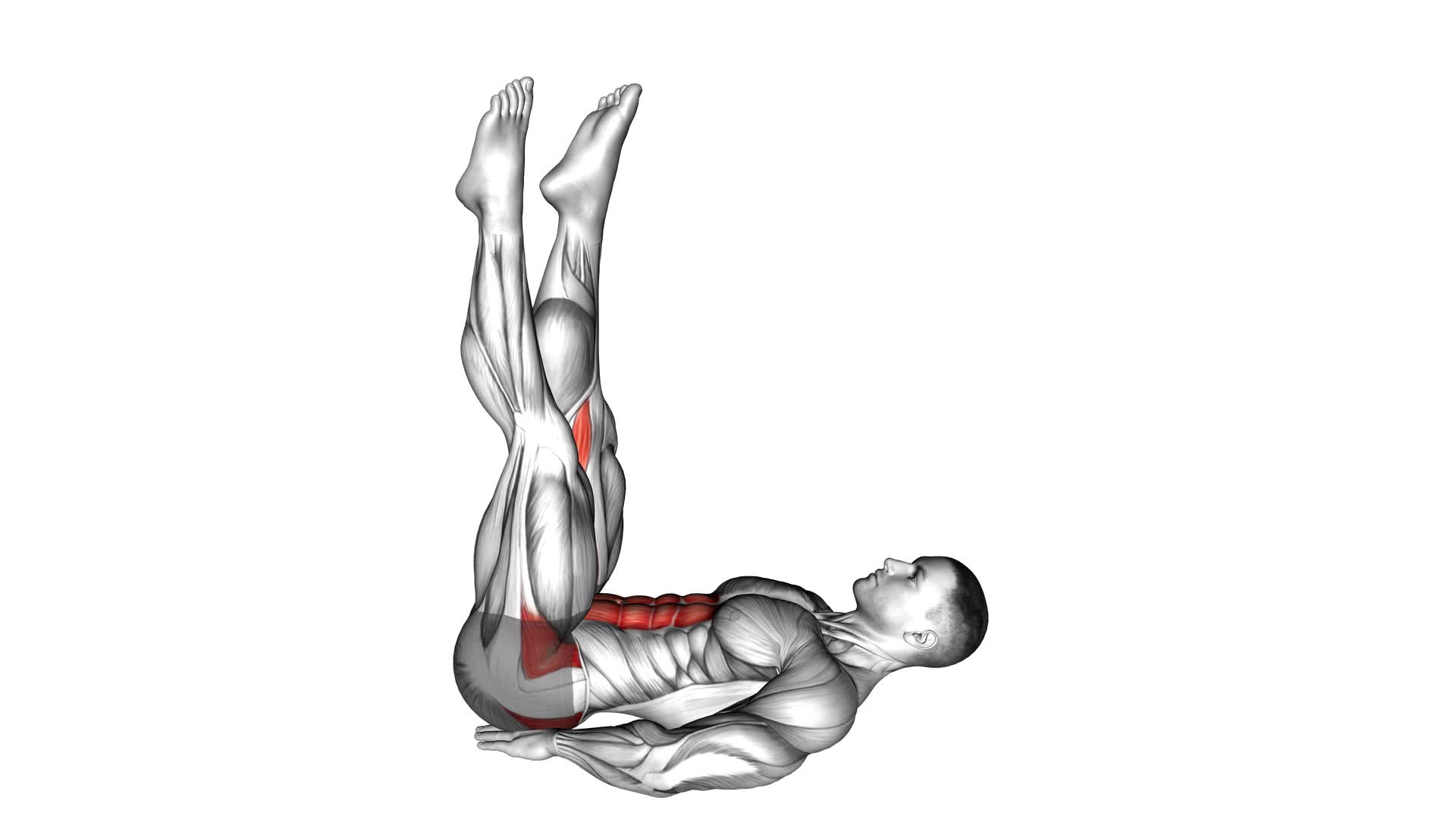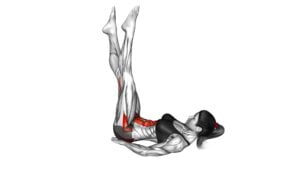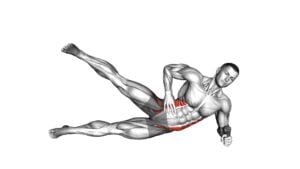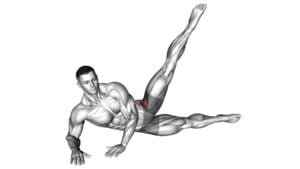Lying Vertical Scissors on Floor – Video Exercise Guide & Tips

Are you looking for a challenging exercise that targets your core and lower abs? Look no further than lying vertical scissors on the floor!
Watch This Exercise Video
In this video exercise guide, we'll show you the proper form and technique to get the most out of this move. Whether you're a beginner or a seasoned fitness enthusiast, we've got modifications to suit your fitness level.
Avoid common mistakes and maximize your results with our helpful tips.
Let's get started!
Key Takeaways
- Lying Vertical Scissors is beneficial for improving core strength and increasing flexibility in the lower body.
- Proper form and technique include lying flat on your back with legs extended towards the ceiling, engaging the core, and avoiding strain on the neck and shoulders.
- Modifications can be made for different fitness levels, such as starting with bent knees and progressing to straight legs, and incorporating variations like extending arms overhead or using weighted objects.
- Common mistakes to avoid include lifting the head off the floor, using momentum instead of controlled movements, and failing to engage the core muscles throughout the exercise.
Benefits of Lying Vertical Scissors
You can experience improved core strength and flexibility by performing lying vertical scissors. This exercise specifically targets your abdominal muscles and helps to activate them effectively. The movement involved in lying vertical scissors engages your core muscles, requiring them to work harder to maintain stability and control. By repeatedly performing this exercise, you can strengthen your core muscles, leading to improved overall core strength.
In addition to strengthening your core, lying vertical scissors also help to improve flexibility. This exercise involves extending and flexing your legs while lying on your back, which helps to stretch and lengthen your leg muscles. This can contribute to increased flexibility in your lower body.
To get the most out of lying vertical scissors, it's important to maintain proper form and technique. This includes keeping your core muscles engaged throughout the exercise, maintaining a neutral spine, and avoiding any excessive twisting or strain on your neck. By practicing proper form and technique, you can maximize the benefits of this exercise and reduce the risk of injury.
Now that you understand the benefits of lying vertical scissors, let's move on to discussing the proper form and technique in more detail.
Proper Form and Technique
To ensure optimal results and minimize the risk of injury, it's crucial to maintain proper form and technique when performing lying vertical scissors. This exercise is great for improving core strength and can be done in various variations to target different muscle groups.
When performing lying vertical scissors, start by lying flat on your back with your legs extended straight up towards the ceiling. Place your hands under your lower back for support. Engage your core and lift your head, neck, and shoulders off the floor. Lower one leg towards the floor while keeping the other leg extended upwards. Alternate legs in a scissor-like motion, ensuring that your lower back stays pressed against your hands and the floor throughout the movement.
Remember to breathe consistently and avoid straining your neck or shoulders. Keep your movements controlled and avoid swinging your legs. To make the exercise more challenging, you can add ankle weights or use a resistance band around your ankles. Additionally, you can try variations such as bicycle scissors, where you bend your legs and perform a cycling motion with your feet.
Modifications for Different Fitness Levels
Achieving optimal results and minimizing the risk of injury in lying vertical scissors requires adapting the exercise to different fitness levels.
Fortunately, there are adaptations for varying abilities that can be made to ensure everyone can participate safely and effectively. For beginners or those with limited core strength, it's recommended to start with bent knees and focus on maintaining proper form before progressing to straight legs. This modification reduces the strain on the lower back and allows for better engagement of the abdominal muscles.
On the other hand, if you find the exercise too easy and want to increase the challenge, you can try extending your arms overhead or holding a weighted object between your feet. These progressions for increasing difficulty will intensify the workout and target your core muscles even more.
By adjusting the exercise to your fitness level, you can ensure you're getting the most out of your workout while avoiding potential injuries.
Now, let's move on to the next section and discuss common mistakes to avoid.
Common Mistakes to Avoid
To ensure proper execution of the lying vertical scissors exercise and prevent potential errors, it's important to be aware of common mistakes to avoid. Here are some common mistakes and how to correct them:
- Lifting your head: One common mistake is lifting your head off the floor during the exercise. This can strain your neck and reduce the effectiveness of the exercise. To correct this, keep your head and neck relaxed and resting on the floor throughout the movement.
- Using momentum: Another mistake is using momentum to swing your legs up and down. This takes away from the targeted muscle engagement and can lead to injury. To correct this, focus on slow and controlled movements, using your core muscles to lift and lower your legs.
- Not engaging your core: Failing to engage your core is a common mistake that reduces the effectiveness of the exercise. To correct this, actively squeeze your abdominal muscles throughout the movement, ensuring they're doing the work.
- Bending your knees: A mistake to avoid is bending your knees excessively during the exercise. This makes the movement easier but reduces the engagement of the lower abdominal muscles. To correct this, keep your legs straight and your knees slightly bent.
- Not breathing properly: Forgetting to breathe properly can hinder your performance and potentially cause dizziness. To correct this, inhale deeply as you lower your legs and exhale fully as you lift them back up.
Tips for Maximizing Your Results
To optimize your results, incorporate these tips into your lying vertical scissors routine. Maximizing efficiency is key to getting the most out of your workout.
First, make sure you maintain proper form throughout the exercise. Keep your core engaged and your lower back pressed firmly against the floor. This will help target your abdominal muscles effectively. Additionally, focus on your breathing. Exhale as you lower your legs and inhale as you bring them back up. This will help engage your deep core muscles and enhance the effectiveness of the exercise.
Incorporating variations into your routine can also help maximize your results. Try adding ankle weights to increase the resistance and challenge your muscles even more. You can also experiment with different leg positions, such as crossing your legs or extending them straight up. This will target different areas of your abs and provide a more well-rounded workout.
Remember to listen to your body and start with a weight and variation that's appropriate for your fitness level. As you progress, gradually increase the weight and intensity of the exercise. By maximizing efficiency and incorporating variations, you'll be on your way to achieving your fitness goals with the lying vertical scissors exercise.
Frequently Asked Questions
How Many Calories Can I Burn by Doing Lying Vertical Scissors?
Lying Vertical Scissors on the floor is a challenging exercise that can help you burn calories and increase your workout intensity. While the exact number of calories burned will vary depending on factors such as your weight and exertion level, this exercise can contribute to a calorie-burning workout.
Can Lying Vertical Scissors Help in Reducing Belly Fat?
Lying vertical scissors can be effective in toning your abdominal muscles and potentially reducing belly fat. This exercise targets your core, helping to strengthen and define your abs.
To suit different fitness levels, you can modify the exercise by bending your knees or placing your hands under your lower back for support.
Incorporating this exercise into your fitness routine, along with a balanced diet, can contribute to achieving your goals of a flatter stomach.
Is It Safe to Do Lying Vertical Scissors if I Have a Lower Back Injury?
If you have a lower back injury, it's important to prioritize safety during your workouts.
Lying vertical scissors may not be the best exercise for you in this case, as it can put strain on your lower back.
Instead, consider safe modifications such as performing the exercise with bent knees or using a stability ball for support.
Alternatively, you can try other exercises like pelvic tilts or bird dogs, which can help strengthen your core without putting stress on your lower back.
How Often Should I Include Lying Vertical Scissors in My Workout Routine?
To determine the frequency of including lying vertical scissors in your workout routine, consider your fitness goals and overall level of strength and endurance.
This exercise can help strengthen your core and hip flexors. Aim to perform it 2-3 times per week, allowing for rest days in between.
Remember to maintain proper form by keeping your lower back pressed into the floor and engaging your abdominal muscles throughout the movement.
Can I Do Lying Vertical Scissors if I Don't Have Access to a Workout Mat?
If you don't have access to a workout mat, there are alternative exercises you can do instead of lying vertical scissors. However, it's recommended to use a workout mat for this exercise.
A workout mat provides cushioning and support for your back and helps to prevent any discomfort or strain. Using a mat also helps to maintain stability during the exercise, allowing you to fully engage your core muscles.
Conclusion
In conclusion, incorporating lying vertical scissors into your exercise routine can offer numerous benefits for your overall fitness. By following proper form and technique, you can target your core, hip flexors, and lower abs effectively.
Remember to modify the exercise based on your fitness level and avoid common mistakes to prevent injury. By implementing these tips and staying consistent, you can maximize your results and work towards achieving your fitness goals.

Author
Years ago, the spark of my life’s passion ignited in my mind the moment I stepped into the local gym for the first time. The inaugural bead of perspiration, the initial endeavor, the very first surge of endorphins, and a sense of pride that washed over me post-workout marked the beginning of my deep-seated interest in strength sports, fitness, and sports nutrition. This very curiosity blossomed rapidly into a profound fascination, propelling me to earn a Master’s degree in Physical Education from the Academy of Physical Education in Krakow, followed by a Sports Manager diploma from the Jagiellonian University. My journey of growth led me to gain more specialized qualifications, such as being a certified personal trainer with a focus on sports dietetics, a lifeguard, and an instructor for wellness and corrective gymnastics. Theoretical knowledge paired seamlessly with practical experience, reinforcing my belief that the transformation of individuals under my guidance was also a reflection of my personal growth. This belief holds true even today. Each day, I strive to push the boundaries and explore new realms. These realms gently elevate me to greater heights. The unique combination of passion for my field and the continuous quest for growth fuels my drive to break new ground.







